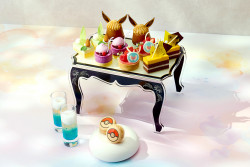
Originally published on metropolis.co.jp on August 2013
Sony Releases Face Recognition Software That Knows You Are a Gaijin
In an excited press conference held at their main showroom in Ginza today, Sony unveiled the latest in “smart camera” technology: a camera with facial recognition software that can determine if the user is foreign and adapt to accommodate.
Speaking to tech journalists, Sony’s lead developer explained, “Cutting edge Race-ignition software can quickly ascertain the nationality of the user through an optical interface that measures eye roundness and length of nose to immediately begin helping the gaijin… err, user, with their camera needs.”
Once having established the “foreignness” of the operator, the in-camera digital panel screen will immediately assume their complete inability to understand Japanese. A voice will also begin issuing helpful audio information, such as intermittently exclaiming, “Oh, you use a camera very well!” or “Do you know Japanese sushi?”
Japan Cuts Carbon Emissions from Non-Kawaii Sources
As nations worldwide struggle to find ways to cut their carbon footprint, Japan has taken an aggressive approach, slashing up to 50 percent of their excess carbon releases from areas unrelated to kawaii things. Speaking at a news conference in Tokyo this past Monday, the Minister of Industry, Environment and Cute Things explained how the drastic cuts have taken effect.
“I must stress that the careful use of electricity across our nation—through setsuden, a renewed look at efficiency in our factories and a redesign of our public transportation system—will not affect our ability to produce cute, largely useless things. I realize many were concerned that our position as a global leader in this area might be threatened as we reduce our carbon footprint. I’m proud to report our footprint is indeed smaller… and cuter.”
Some early reports showed that cuteness may have suffered as Akihabara maids reported increased sweating due to higher temperatures and factories discussed removing unnecessary cat ears from products ranging from baby bottles, coffee mugs and kidney dialysis machines. However, early results show a net increase in the amount of entirely unneeded cuteness.
African Man Lost For Hours Trying to Ask for Directions in Roppongi
Investment analyst Abdul Mktembe wandered the areas surrounding Roppongi Crossing for three hours on Saturday evening in a vain attempt to get directions. Surprised by the cold shoulder given him by residents as well as foreign tourists, the 38-year-old visiting businessman from Nigeria explained his frustration to The Negi, “I understand that in large cities like Tokyo people are busy and often unfriendly, but people were downright rude. I tried everyone I passed on the street, but no one would take even a moment to tell me where I could find The Disney Store. My two daughters will be heartbroken that I couldn’t buy them a Princess Tiana doll.”
When asked, one pedestrian explained, “He got in my face asking if I liked baby dolls or something.” Another stressed, “Before he even opened his mouth I was like, ‘Just go F-yourself, dude.’ I don’t have time for this trash. I’m going to a club to get drunk and look for some skanks.”
He was especially saddened since his youngest has recently been diagnosed with childhood leukemia.
Mr. Mktembe momentarily believed he had found hope when he ran into a fellow countryman, but the man could not give him directions to The Disney Store, only stating: “I know just the place man for young girls man. Follow me.”
The Negi Presents…
How to: Chopsticks
One huge challenge for foreign visitors to Japan is chopsticks. Since no foreigner— even from other parts of Asia—has ever used ohashi before it may seem like an insurmountable goal, but newly-arrived English teacher Mike Stone shares his top tips to amaze nearby Japanese diners with your skill.
1) Never stick your chopsticks in the rice. An allusion to Buddhist funeral rites and very bad manners. Instead, when not being used chopsticks can be placed behind your ear.
2) When separating wooden chopsticks it is polite to make a loud “Haiiiiiii-ya” karate chop noise. If they do not break exactly perfectly, keep trying until you have.
3) A small wooden spear is usually included with disposable chopsticks. Many mistake this for a toothpick. This is actually a Shinto good luck charm that harkens back to when a samurai would need to defend his rice from attack.
4) It is considered bad etiquette to pass food from one pair of chopsticks to another. Instead, it must be thrown and caught. Most Japanese spend their childhood learning this skill. Please practice at home to avoid embarrassment at formal dinning situations.
News in Brief
- Ramen Restaurant Admits: “We’re Pretty Much Just Average Ramen”
- Flock of Pigeons Pities Crowd of Commuters
- Japanese Tattoo Artist Bored of Giving Foreigners Kanji Typos
- Man Starts New Blog to Explain to World That Japan Is Weird
- Japanese TV Idol Draws Attention to Enormous Breasts by Being Stupid
Next Tokyo Comedy Store show: Aug 30 at Crocodile in Shibuya
Got news? Contact The Negi.








